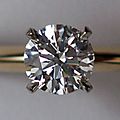Gibbs free energy facts for kids
Gibbs free energy is a special way to measure the useful energy available in a chemical reaction. It helps scientists understand if a reaction will happen on its own or if it needs a push. A smart scientist named Josiah Willard Gibbs came up with this idea.
Contents
What Gibbs Free Energy Tells Us
Everything in nature tends to move towards a state where it has the lowest possible energy. Think of a ball rolling downhill – it stops when it reaches the lowest point. Gibbs free energy tells us how far a chemical reaction is from its lowest energy state.
Imagine a number line. Zero on this line is the perfect, lowest energy state a reaction wants to reach.
- If the Gibbs free energy number is negative, it means the reaction can release energy. This is like the ball rolling downhill by itself. These reactions are called "favorable" because they "want" to happen and give off energy.
- If the Gibbs free energy number is positive, it means you need to add energy to make the reaction happen. This is like pushing the ball uphill. These reactions won't happen on their own.
Scientists use Gibbs free energy to figure out how much useful energy they can get from a system.
An Example: How Our Bodies Get Energy
A great example of Gibbs free energy in action is respiration, which is how our bodies get energy from food. When our bodies break down one mole of glucose (a type of sugar), the Gibbs free energy value is about -686 kcal.
This negative number tells us that our bodies can get 686 kcal of energy from one mole of glucose. This energy is then used for everything we do, like thinking, moving, and growing!
How to Calculate Gibbs Free Energy
Scientists use a special equation to calculate Gibbs free energy. The full equation looks like this: G(p,T) = U + pV − TS
This is often simplified to: G(p,T) = H − TS
In the simplified equation, U + pV is replaced by H because H stands for enthalpy, which is a measure of the total heat content of a system.
Here's what each letter in the equation means:
- G is the Gibbs free energy itself.
- U is the internal energy of the system (all the energy inside).
- p is the pressure.
- V is the Volume.
- T is the temperature (in Kelvin).
- S is the entropy, which is a measure of disorder or randomness in the system.
- H is the enthalpy, which is the total heat content.
Images for kids
-
Did you know that diamonds can turn into graphite? The reaction from diamond to graphite has a negative Gibbs free energy, meaning it's "favorable." But don't worry, it happens so slowly that you won't see your diamond ring turn into pencil lead! This is because it needs a lot of "activation energy" to start.
See also
 In Spanish: Energía de Gibbs para niños
In Spanish: Energía de Gibbs para niños



